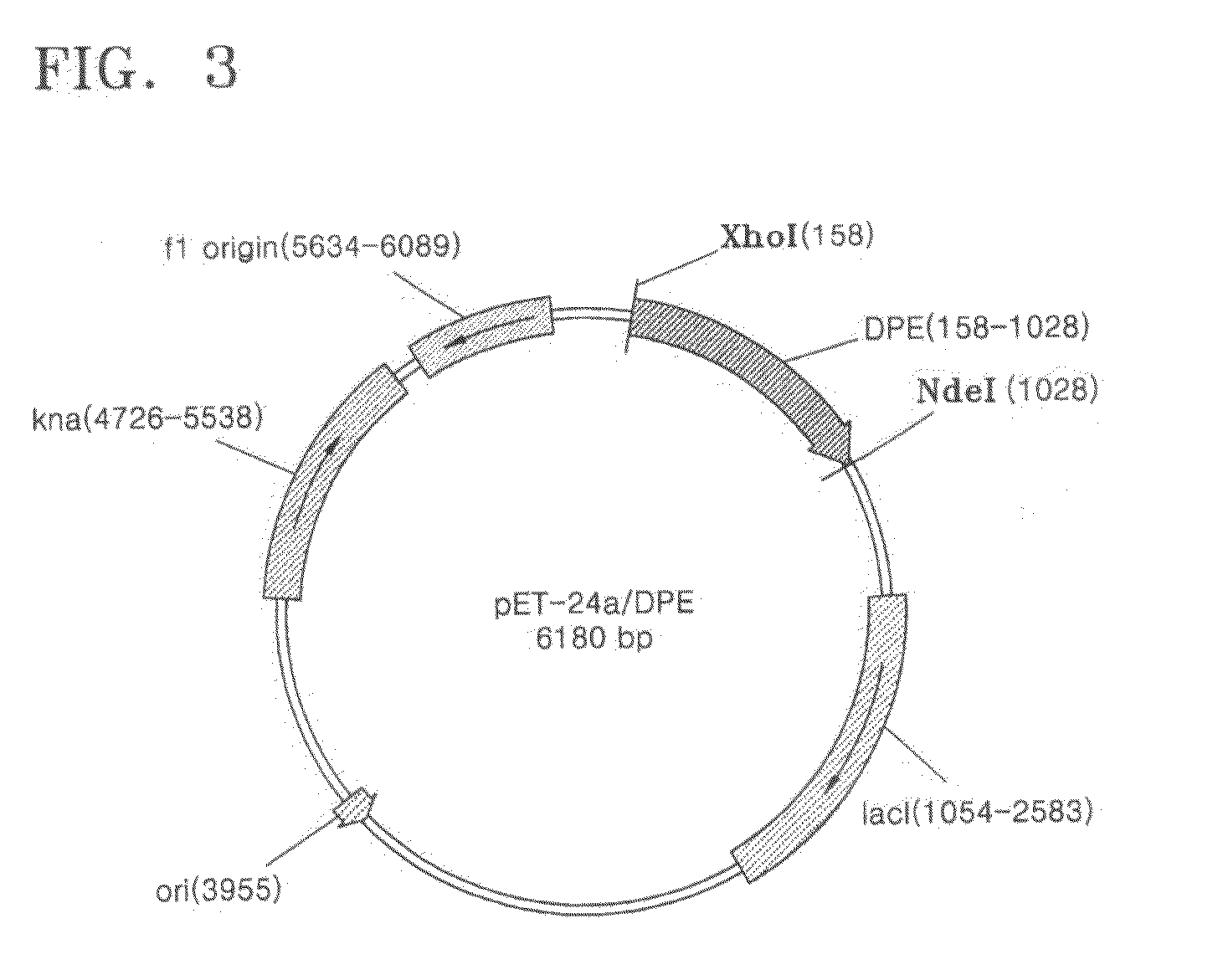D-psicose production method by D-psicose epimerase
a production method and technology of d-psicose, applied in biochemistry, organic chemistry, biochemical apparatus and processes, etc., can solve the problems of low caloric contribution and high production cost, and achieve the effect of maximizing production effect, reducing production cost and increasing production yield
- Summary
- Abstract
- Description
- Claims
- Application Information
AI Technical Summary
Benefits of technology
Problems solved by technology
Method used
Image
Examples
experimental example
[0037]In the current Experimental Example, MALDI-TOF-MS was used for the measurement of the molecular weight of psicose 3-epimerase, and cinnamic acid was used as a matrix. The enzyme activity was measured by using D-fructose as a substrate. For the measurement of the enzyme activity, psicose 3-epimerase was allowed to react with D-fructose in a 50 mM PIPES buffer solution containing 1.0% of D-fructose, at pH 7.5 and at 50° C. for 20 minutes, and then the reaction solution was heated at 100° C. for 5 minutes to terminate the reaction. The PIPES buffer solution containing D-fructose was prepared by dissolving D-fructose in PIPES buffer solution at pH 7 to 8 to a concentration of 60 to 70% by weight, and the PIPES buffer solution containing D-fructose was continuously added to a bioreactor maintained at 40 to 60° C. For the purpose of easy comparison of the enzyme activity, one unit of psicose 3-epimerase is defined as the amount of the psicose 3-epimerase needed to produce 1 mole of ...
example 1
Mass Production of psicose 3-epimerase
[0039]The gene of psicose 3-epimerase was obtained in a large amount by amplifying the DNA of Agrobacterium tumefaciens ATCC33970 by a polymerase chain reaction (PCR) using a primer designed based on the DNA base sequence of a gene that had been suggested as a tagatose 3-epimerase gene of Agrobacterium tumefaciens C58 but had not been functionally characterized. The obtained gene of psicose 3-epimerase was inserted in an expression vector, pET-24a(+) (Novagen, Inc.), by using restriction enzymes XhoI and NdeI to produce a recombinant expression vector pET-24a(+) / psicose 3-epimerase (See FIG. 3). This recombinant expression vector was transformed into Escherichia coli BL21(DE3) by a conventional transformation method. The transformed strain E. coli BL21(DE3) was cryogenically stored in liquefied nitrogen before being cultured for mass production.
[0040]Thereafter, an inoculum of the cryogenically stored E. coli BL21(DE3) strain was inoculated in a...
example 2
Purification of psicose 3-epimerase
[0041]In order to perform characterization of the psicose 3-epimerase, the psicose 3-epimerase was purified using an affinity HisTrap HP column, a demineralized HiPrep 16 / 60 column, and a gel filtration Sephacryl S-100 HR column.
[0042]The molecular weight of the purified psicose 3-epimerase was measured, and it was found that the psicose 3-epimerase was a monomer having a molecular weight of 32,600 Da. The amino acid sequence of the psicose 3-epimerase was confirmed to be identical to the amino acid sequence of NCBI accession number NP—535228.
PUM
| Property | Measurement | Unit |
|---|---|---|
| temperature | aaaaa | aaaaa |
| temperature | aaaaa | aaaaa |
| pH | aaaaa | aaaaa |
Abstract
Description
Claims
Application Information
 Login to View More
Login to View More - R&D
- Intellectual Property
- Life Sciences
- Materials
- Tech Scout
- Unparalleled Data Quality
- Higher Quality Content
- 60% Fewer Hallucinations
Browse by: Latest US Patents, China's latest patents, Technical Efficacy Thesaurus, Application Domain, Technology Topic, Popular Technical Reports.
© 2025 PatSnap. All rights reserved.Legal|Privacy policy|Modern Slavery Act Transparency Statement|Sitemap|About US| Contact US: help@patsnap.com


